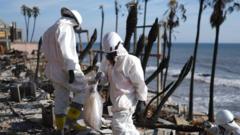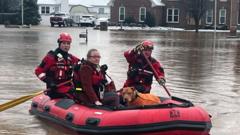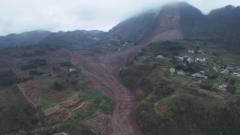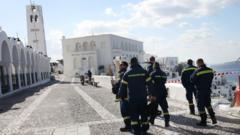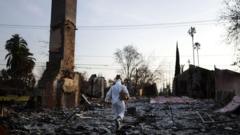Recent high-profile claims of earthquake predictions raise questions about the viability of forecasting seismic events. Experts assert that while certain regions are seismically active, the complex nature of tectonic movements makes precise prediction nearly impossible, urging a focus on preparedness instead.
The Quest for Earthquake Predictions: Why They're Often Off the Mark

The Quest for Earthquake Predictions: Why They're Often Off the Mark
Despite a surge in popular predictions, scientists emphasize the inherent unpredictability of earthquakes.
In mid-October, social media influencer Brent Dmitruk announced to his followers that an earthquake would hit near Eureka, California. Two months later, a magnitude 7.3 quake indeed struck the region, amplifying his online presence as followers sought his guidance for future forecasts. Dmitruk's success ignites a critical conversation about earthquake prediction, an area where scientific consensus firmly states accuracy is unattainable.
Lucy Jones, a seasoned seismologist, highlights the intense human desire to discern patterns amidst danger. "People yearn for concrete answers when they feel threatened," she explains, acknowledging this impulse lacks predictive validity. The U.S. Geological Survey (USGS) reports roughly 100,000 earthquakes annually, intensifying the demand for alerts among coastal residents, especially regarding the notorious strong quakes dubbed "the big one."
The Eureka region, among the United States' most seismically dynamic, is notorious for frequent seismic activity. With multiple tectonic plates converging, predicting an earthquake there might seem straightforward; however, Jones counters that ambiguity lingers. The USGS reveals just 11 major quakes have occurred since 1900, five of which locality aligns with Dmitruk’s prediction, though the rarity of significant quakes means his guess could feasibly arise from chance.
Scientific insights cite an intricately interwoven set of geological factors at work during quakes, likened by Jones to a piece of paper tearing apart—disturbances initiate a rupture that cannot be predated accurately. Although the USGS can assess general probabilities for earthquakes in particular locales, they concede long-term forecasting remains out of reach for the foreseeable future.
Throughout her career, Jones has encountered countless eager anticipators of "the big one," who share predictions that whimsically fluctuate based on recent seismic events. Dmitruk himself has suggested clashes of variables leading to speculative 10.3 magnitude predictions in remote regions like Alaska or New Zealand, claims steeped more in conjecture than scientific backing.
Despite the challenge of predicting specific events, experts underscore the significance of preparedness. Annually, millions drill through the Great Shake Out, mastering strategies like Drop, Cover, and Hold On to mitigate risks during a quake. Initiatives extend into systems like ShakeAlert, which offer brief warnings before seismic waves arrive but cannot forecast future incidents.
As anticipation for seismic activity looms, experts stress that establishing resilient communities through education and readiness is the most prudent approach to facing inevitable uncertainty in earthquake forecasting.






